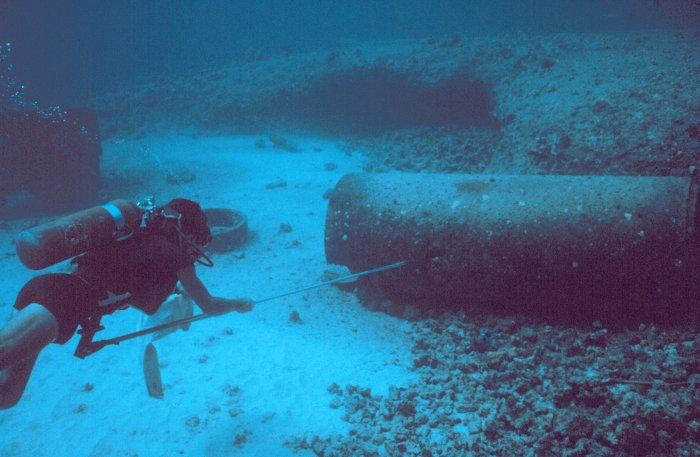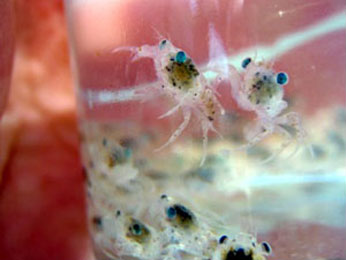Long Range Fish Report
From Sportfishing
From Sportfishing
Fish Report for 4-24-2014

California Outdoors Q & A: Spear Fishing at Night?
4-24-2014
California Department of Fish & Wildlife
California Department of Fish and Wildlife
Marine Management NewsNews Release
FOR IMMEDIATE RELEASE - APRIL 24, 2014California Outdoors Q & A: Spear Fishing at Night?
Question: Can rockfish and lingcod be taken by spearfishing after dark? (Brian S.)
Answer: Yes, you may spearfish for rockfish and lingcod at night, except in San Francisco Bay (California Code of Regulations Title 14, Section 27.56).
Question: With trout season opening soon, I was thinking about how several years ago I ran across a way to identify what strain a Lake Crowley trout was based on which fins were clipped. Identify as follows: adipose only-Eagle Lake strain, adipose and left ventral-Kamloops (from Junction Reservoir), adipose and right ventral-Coleman, and ventral only-Kamloops or Coleman. No fin clips would indicate a natural spawn and not from a hatchery. And, what hatchery would these plants have come from? Possibly Hot Creek or maybe Fish Springs? I have talked to the driver planting catchables in Silver Lake and learned those plants came from the Fish Springs hatchery. Thanks for any info you can provide. (Ron A.)
Answers: In the mid-1990s, California Department of Fish and Wildlife (CDFW) fisheries biologists applied fin clips to Eastern Sierra trout stocked in Crowley Lake to evaluate their performance, growth, return to creel, etc. The results were very interesting.
According to CDFW Fisheries Program Manager Curtis Milliron who conducted those studies, wild trout were unmarked and at that time both rainbow and brown trout constituted about 25 percent of the catch of all larger fish caught at Crowley. They did not substantially supplement the average size class, however. The marked trout came from both Fish Springs (Coleman strain rainbow trout and Eagle Lake trout) and from Hot Creek Hatchery (Kamloops strain rainbow trout).
Coleman strain fish were found to be caught most often by anglers while trolling, while Kamloops were often associated with nearshore angling. Eagle Lake trout were found all over the lake, including feeding on large snails right on the lake bottom. Additionally, Eagle Lake trout outlived the other strains, and therefore greatly contributed to the "carryover" population, which are fish that do not get caught in the first year after being stocked and are caught by anglers at a much larger size.
By about 1999, Milliron discontinued the Crowley Lake trout strain studies but thinks some marked fish may have persisted in the lake for another five years, at most. Today, no similar studies are being conducted, and fin clips to identify the various strains of Eastern Sierra trout are no longer being applied. But, thanks to the findings of the studies, a management plan for Lake Crowley was created, and the lake continues to draw anglers back year after year as one of the most popular and productive trout lakes in the Eastern Sierra.
Question: My buddy and I are going out of town on a three-day turkey hunt. If we both get a turkey each day (total of six) and get stopped by a warden on the way home, will we be legal? I heard that you can't have more than one bird with you at a time, but the regulation states possession limit is three birds per hunter for the season. I want to make sure we are legal. Otherwise I will have to travel back and forth after each successful day and it's about a two-hour drive each way. Thanks for any information you can give me. (Brent M.)
Answer: You do not have to return home after taking a bird on any one day. The daily bag limit for turkeys during the spring season is one bearded turkey per day and you can take three per season. You may have three bearded turkeys in your possession as long as you only take one per day.
Question: I found someone in Oregon selling a raw coyote skull. I own some flesh-eating dermestid beetles and am interested in buying the skull from them to clean off. Is it legal to buy raw (uncleaned) skulls from other states if it was obtained legally and not from California? I know you can't purchase almost any part of California fish and game, but can we bring parts in from other states? (Anonymous)
Answer: Yes, as long as the animal was legally taken in another state and is properly imported with a "Declaration for Entry into California form," then it can be possessed. The same goes for most species, but there are some exceptions, such as bears, mountain lions, and fully protected birds and mammals whose parts cannot be legally possessed in California (Fish and Game Code, Section 3039). For a copy of the declaration form, please go to the website. Remember that deer and other cervid skulls may not be brought into the state unless special rules are followed to prevent the spread of chronic wasting disease (see CCR Title 14, Section 712).
Carrie Wilson is a marine biologist with the California Department of Fish and Wildlife. She cannot personally answer everyone's questions but will select a few to answer in this column each week. Contact her at CalOutdoors@wildlife.ca.gov.
Photos and all archived columns: http://californiaoutdoors.wordpress.com
CDFW Marine Management News
Ocean-related news and information
Visit the Marine Region Website at
www.dfg.ca.gov/marine
California Department of Fish and Wildlife
Box 944209
Sacramento CA 94244
< Previous Report Next Report >
More Reports

4-23-2014
Plant Date Water Countries 04/20/2014 Alpine Lake Alpine 04/20/2014 Carson River East Fork Alpine 04/20/2014 Carson River West Fork Alpine 04/20/2014 Markleeville Alpine 04/20/2014 Stanislaus Alpine, Tuolumne 04/20/2014 Butte Creek, Big Butte 04/20/2014 Angels Creek Calaveras 04/20/2014 White Pines Lake Calaveras 04/20/2014 Stanislaus River North Fork Calaveras, Tuolumne 04/20/2014 Letts Lake Coluso 04/27/2014 Lafayette...... Read More

4-21-2014
California Department of Fish and Wildlife Marine Management News Informational Notice FOR IMMEDIATE RELEASE - April 21, 2014 California Dungeness Crab Task Force...... Read More

LongRangeSportfishing.net © 2025. All Rights Reserved.
Website Hosting and Design provided by TECK.net
Website Hosting and Design provided by TECK.net